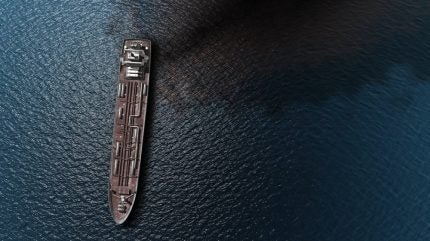
An oil tanker carrying close to 1,500 tonnes (t) of industrial fuel has capsized and sunk off the coast of the Philippines, causing a major oil spill.
According to several news outlets, the country’s transportation secretary, Jaime Bautista, explained that an oil spill has been detected, but strong winds and high waves have been preventing an efficient response from local authorities.
Reports indicate that 16 of the 17 crew members of the MT Terra Nova, which is just under 70m long and sales under the flag of the Philippines, have been rescued.
The incident came a day after Typhoon Gaemi hit the Philippines and Taiwan, causing mass devastation across both countries.
The MT Terra Nova was scheduled to arrive at the central Philippine city of Iloilo when it sank.
The Philippine coast guard is investigating “if there was an existing weather disturbance in the vicinity waters when the maritime incident occurred”. The cause of the loss will be decided after an investigation.
In a related incident, two tankers collided and caught fire off the coast of Singapore last Friday. The Singapore-flagged Hafnia Nile and the Principe-flagged, Chinese owned Ceres I crashed into each other 34 miles off the coast of Singapore.
After the incident the Ceres I seemingly fled the scene, switching off its location system.
The tanker was subsequently located in Malaysian waters amid reports it had been transporting Iranian oil. Data from Kpler and the London Stock Exchange Group indicated that the Ceres I had been carrying out ship-to-ship oil transfers in Malaysia throughout April.
Iran has since denied that there was Iranian oil on either of the damaged tankers.
The circumstances of the collision between the Hafnia Nile and Ceres I, however, remain unclear.
Meanwhile, Rear Admiral Armondo Balilo, the spokesperson from the Philippine coast guard, explained it is a “race against time” to contain the oil spill.
According to information from the coast guard, reported by a US news agency, the spill now covers two nautical miles and is being carried out east by north-east due to strong currents.
Manila Bay, where the tanker capsized, is the host to several busy shipping lanes. If the authorities cannot begin the recovery process soon, the local environment faces significant damage, with local businesses also being affected.
Local reports indicate that a 97m coast guard vessel has been deployed to search for the missing crew member and combat the spill. Smaller vessels are also available but are waiting for the weather to calm before the operation begins.
Bautista explained that there is “already an oil spill” and “right now we cannot dispatch our resources because of strong winds and high waves”.
A similar incident occurred in March 2023, where the MT Princess Empress capsized off the Philippines’ coast at Naujan, spilling 800t of industrial fuel into the Oriental Mandora Province.
The oil leak affected nearby fishing villages and covered local beaches with black sludge. Residents in villages, as well as those involved in the clean-up process, have reportedly become ill due to the waste from the oil spill.
Despite these three recent incidents, however, modern oil spills remain thankfully rare, and smaller in scale. For example, in 1967, the Torrey Canyon struck an obstacle off England’s south-west coast, leaking 31,000,000 gallons of crude oil into the sea.
In 1989, the Exxon Valdez hit rocks in Prince William Sound, spilling 240,000 barrels of crude oil onto Alaskan shores.







